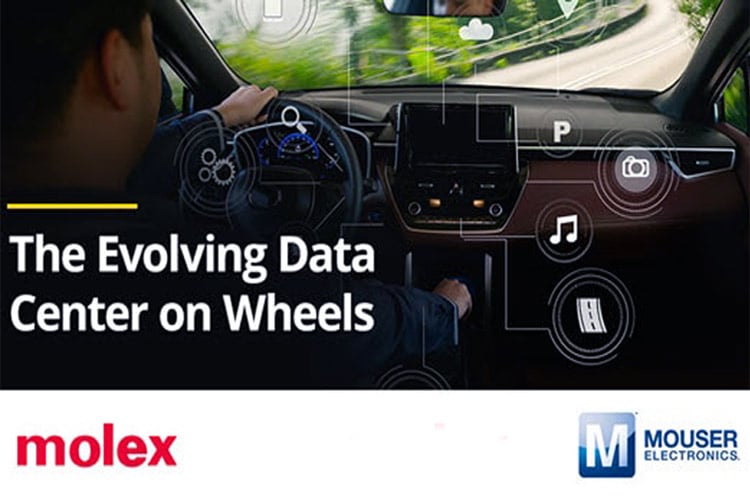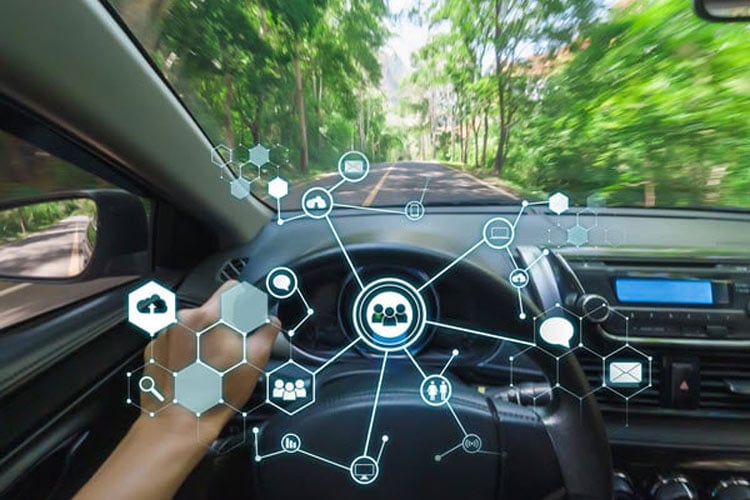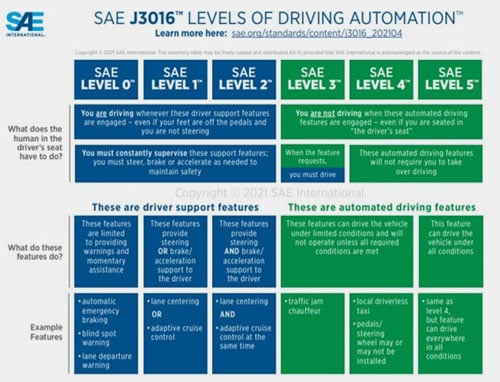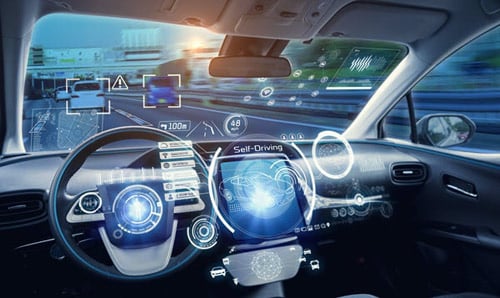
Forty years ago, when I was in high school, my vehicle had two primary pieces of electronic technology that I was concerned with. My 1972 Chevrolet Nova had no Global Positioning System (GPS), driver assist, or backing cameras. I did not even have power windows and locks (Figure 1). I roll cranked the windows down and up and hit all the locks by hand to engage or disengage.

Figure 1: Image of a classic car without electronic technology such as power locks and windows. (Source: RPM-Art.com – stock.adobe.com)
The first key electronic system was a high-powered car stereo with a separate power amp and 10-band equalizer to crank the rock-and-roll. The second was a top-of-the-line Cobra radar detector mounted internally within my hood and connected under my dash. Hopefully, the radar detector provided me with a sufficiently early warning and greater protection against getting caught speeding by the radar and laser guns in use by the police at the time.
Data Center on Wheels
Fast forward several decades and digital technology have been a driver in today’s exciting paradigm shift in next-generation vehicle architecture and driver experience. Automakers are now challenged to create a seamless driving experience powered by software, connectivity, cloud, and edge computing capabilities—essentially a data center on wheels. So, how are automakers rising to the challenge? What do they need to plan for now to avoid being left behind?
Molex Automotive
Molex decided to research these questions. Molex is all about creating connections for life. The company believes in the transformative power of creating connections. They use innovation, engineering excellence, commitment to quality and reliability, and superior customer experience to improve communication, elevate experiences, and engage and inspire people everywhere. The pace of change is accelerating at an unprecedented rate, and Molex is committed to providing insights to help their customers and partners stay ahead of the curve with original research and insight that drive compelling and informed decision-making.
The Future of Automotive
Molex started by asking questions involving the design complexities of a connected vehicle (Figure 2). They explored how automotive companies are responding to and planning for the future. They looked into the technologies and consumer expectations of the car of tomorrow. Molex surveyed 230 auto manufacturing decision-makers to forecast trends, challenges, and preferences for vehicles in 2030. The results are fascinating. Let me share with you some of the key takeaways.

Figure 2: Automotive companies are exploring consumer preferences, emerging technologies, and solutions to create a seamless connectivity experience in the vehicle of tomorrow. (Source: chartphoto – stock.adobe.com)
Coming Soon...
Automotive electronic architectures are quickly warping into edge-based high-performance computing platforms (HPC), adopting many characteristics indicative of current high-performance computing data centers. Requisite reductions in latency, enabling real-time decision-making coupled with increased vehicle autonomy, are driving this trend. Automotive stakeholders believe Data Center on Wheels features will be available in the next decade (by 2032). These features include, among others:
- User interface via mobile applications
- Streaming entertainment such as movies and television
- Remotely enabled new add-on features
- Subscription model pricing for key features
- Safety, driver safety profiling, and driver assistance (ADAS)
- Over-the-air software updates
Level 4 (Mind Off) and Level 5 (No Steering Wheel) Autonomy
SAE International Levels of Driving Automation™ (J3016™) is an industry taxonomy accepted for driving automation. With its six defined categorical levels for driving automation, SAE J3016™ outlines autonomy from Level 0 (no driving automation) to Level 5 (full driving automation) (Figure 3).

Figure 3: SAE J3016™ Levels of Driving Automation. (Source: SAE International)
Survey participants varied widely in their responses to the time frames when they believed there would be a fifty percent market share for new vehicles with Level 4 or Level 5 autonomy. This response reflects the uncertainty in knowing how technological advances built into the car will overcome the numerous complex contextual signals and cues required when driving. Ninety-eight percent expect to face a variety of technology issues. Given that cars are traveling at high velocities, understandably, cybersecurity concerns top the list.
Software
The survey shows broad agreement (99 percent agreement) that new services will be needed, with software ecosystems topping the list. Operating systems (OS), artificial intelligence (AI) models, functional safety information, and software updates require robust and reliable software systems to integrate into the vehicle (Figure 4).

Figure 4: The survey revealed wide agreement among auto manufacturing decision-makers that software ecosystems play a crucial role in the evolution of connected vehicles. (Source: metamorworks - stock.adobe.com)
Solutions Addressing the Future
As demand for interconnectivity has accelerated over the past 40 years, Molex has played a critical role in serving the automotive industry. One example of responding to the data center on wheels’ need for higher speed interconnectivity gets achieved through Molex High-Speed Cable Assemblies. These cable assemblies deliver data rates as high as 400Gbps with cable lengths ranging from 0.50m to 5m. These assemblies feature dual-ended connectors, lock-to-mating parts, and 30AWG Twinax, Temp-Flex Twinax, or round wires/cables. Additionally, Molex Premo-Flex FFC Jumpers provide flexible design options for applications requiring connections between PCBs. They feature high-temperature ratings up to +105°C and terminate to either Zero Insertion Force (ZIF) or non-ZIF connectors. Compatible with industry-standard ZIF cable thickness requirements, the 0.27mm (0.011”) thick Premo-Flex FFC Jumpers are easy-to-assemble—even in highly customized hard-to-reach environments—and can be implemented into existing applications.
Conclusion
While I still love cranking my car stereo and wish to avoid picking up speeding tickets from the police, my car rides today take more advantages provided to me by the data center on wheels. Molex connectivity solutions have been developed to help us enjoy and navigate the driving experience. For further information, click on the link Molex’s Automotive Survey: The Data Center on Wheels to learn more. For additional insights from Molex on how they are designing cars to get us from here to the future check out their eBook From Here to the Future: Connectivity Solutions Enhance the Driving Experience.
Author:

Paul Golata joined Mouser Electronics in 2011. As a Senior Technology Specialist, Paul contributes to Mouser’s success through driving strategic leadership, tactical execution, and the overall product-line and marketing directions for advanced technology-related products. He provides design engineers with the latest information and trends in electrical engineering by delivering unique and valuable technical content that facilitates and enhances Mouser Electronics as the preferred distributor of choice.
Before joining Mouser Electronics, Paul served in various manufacturing, marketing, and sales-related roles for Hughes Aircraft Company, Melles Griot, Piper Jaffray, Balzers Optics, JDSU, and Arrow Electronics. He holds a BSEET from the DeVry Institute of Technology (Chicago, IL); an MBA from Pepperdine University (Malibu, CA); an MDiv w/BL from Southwestern Baptist Theological Seminary (Fort Worth, TX); and a PhD from Southwestern Baptist Theological Seminary (Fort Worth, TX).
Article Source: Mouser Electronics





